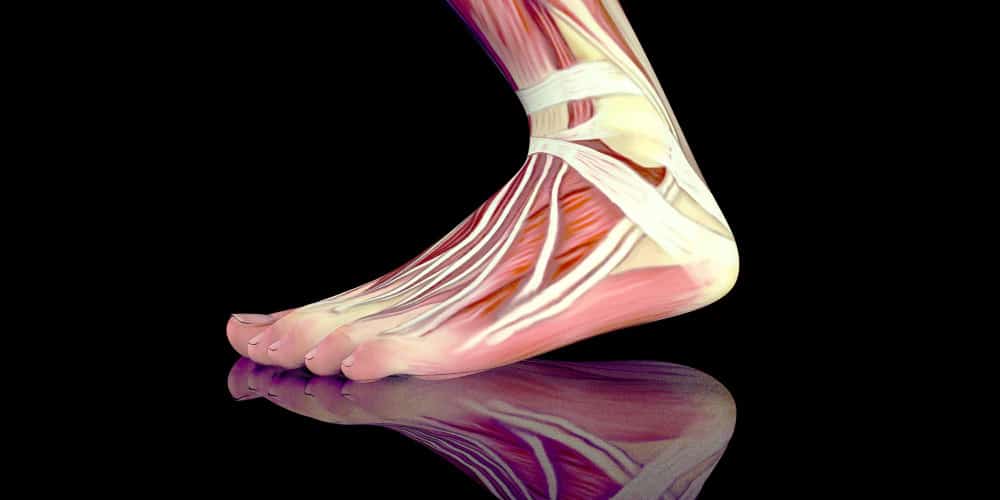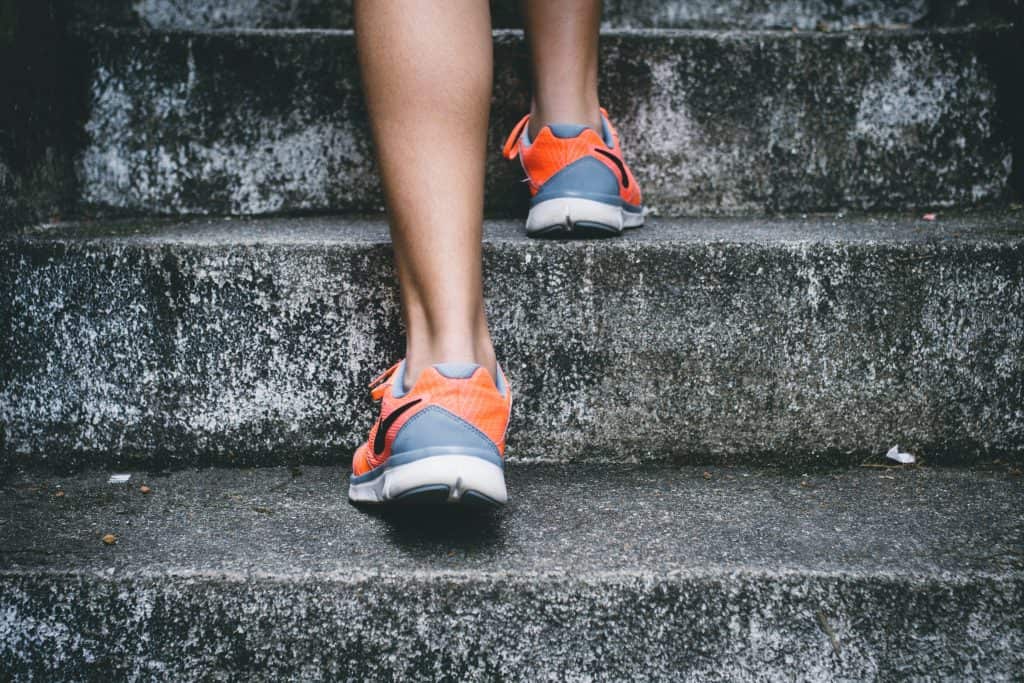A healthy, well functioning foot can produce or absorb large forces, be fluid or rigid and adapt to its environment. Our feet allow us to do incredible things such as walking on rocks, running at high speeds, achieve full pointe position and walk tightropes. Although these are extreme examples for some, our feet certainly are capable of managing these strenuous tasks and as a result optimizing foot health and function is critical.
Believe it or not, approximately 25% of all our bones are located in our feet and there are 29 muscles in each of our feet. Each of these muscles play a role in our foot stability, structure and health. The muscles in our feet can be split into two groups – intrinsic (deep) and extrinsic (superficial).
Extrinsic foot muscles arise from the lower leg region and act to turn out the ankle and foot inward and outward, up and down or a combination of each. Think of muscles along your calf or your shin which start in these areas and attach onto your foot or ankle. Our intrinsic foot muscles, otherwise known as the ‘core’ muscles of the foot, are muscles exclusive to the foot and ankle region and control fine motor actions of our tarsals and metatarsals (toes). Intrinsic foot muscles are further divided into another 4 layers of muscles which each serve distinct roles in our foot function. These muscles play important roles in creating and sustaining the arch of our foot. As opposed to some of our larger muscles, these muscles only control movements exclusively in the foot itself and work in conjunction with the plantar fascia to create stability within the foot. Training to improve strength in these muscles has shown to improve foot posture, motor control, capacity to absorb force and dynamic balance (Wei et al. 2022)

Improper function of our intrinsic foot muscles can lead to a variety of dysfunctions, such as hallux valgus (bunions), metatarsalgia and plantar fasciitis. The plantar fascia is not a muscle, but a flat thick layer of connective tissue which spreads from under the heel and runs down to attach under the bones of our toes. The plantar fascia acts in a similar way to our intrinsic foot muscles in that it can absorb large amounts of force, create rigidity in our foot to assist with propulsive movements and help turn our foot into an efficient lever when we need to move. Plantar fasciitis is the irritation of this connective tissue under our foot and can be caused by excessive or absent foot arch, lack of ankle dorsiflexion, inappropriate weight bearing activities, excessive foot pronation or weakness of intrinsic foot muscles. There are other causes such as poor shoe fit or elevated BMI, although these are not exclusively impacted by the health, structure or adaptability of the foot. As a result, a foot with healthy and functioning intrinsic foot muscles can reduce the risk of plantar fasciitis and strengthening these muscles can help you when recovering from plantar fasciitis.
There are plenty of exercises to improve intrinsic and extrinsic foot function, whether this be exclusively or with these muscles working together. The exercises listed below aim to focus on intrinsic foot muscle activation, while attempting to limit extrinsic foot muscle activation. These require no equipment, just your feet and a flat, solid floor. Beware, for most of us these muscles and movements are somewhat underutilized, so you may find these movements cause an ache or cramp like feeling when you start.
1. Short foot
For this movement, have both feet flat on the floor at shoulder width apart. Start by lifting all your toes up while making sure the balls of your feet stay in contact with the floor. You would have completed this movement correctly if you now have a greater raised arch in your foot. Now, while holding this new arch, lower your town back down to the ground. Toes should be flat and relaxed to avoid toe clawing. If you have been able to keep this foot arch, you should feel and see that your foot may look a little shorter than before. Try to maintain this new position for 30+ seconds.
2. Toe splay
For this movement, have both feet flat on the floor at shoulder width apart. Start by trying to spread out all your toes as far as possible and creating as much space between each of your toes. As you do this, do not lift your toes up towards you or curl them if possible. You will likely find the big toe is the most mobile, and the other toes will find this quite difficult. Your foot arch should feel more active and accentuated. Hold this position for 10+ seconds and repeat.
3. ‘Piano’ Big/little toe lift
For this movement, have both feet flat on the floor at shoulder width apart. Start by lifting your little toes from the floor, while keeping the big toe in contact with the floor. As you start to lower your little toes back down, begin to raise the big toe off the floor. Now you should find as your big or little toes lift, the other moves back to the floor. This can be made more difficult by completing ‘Short Foot’ first before beginning this exercise. You can also try to lift each toe individually in order, either by starting at your big toe or your pinky toe.

To add difficulty to all of these exercises, attempt while standing, then standing on one leg or you can add these exercises into various Pilates or yoga movements.
Intrinsic foot muscle training is a simple and easy place to start to improve the health of your foot, whether you’re looking to improve your dynamic balance, motor control and foot strength or have aches and pains in your feet which just aren’t seeming to go away. If this is you and you would like to know more with further assessment in this area, please don’t hesitate to contact one of our clinics to make an appointment with a physiotherapist.
This blog was written by Luke Mrowka (Physiotherapist), from our Burnside & Campbelltown practices.
References
Wei, Z., Zeng, Z., Liu, M., & Wang, L. (2022). Effect of intrinsic foot muscles training on foot function and dynamic postural balance: A systematic review and meta-analysis. PloS one, 17(4), e0266525.
https://doi.org/10.1371/journal.pone.0266525